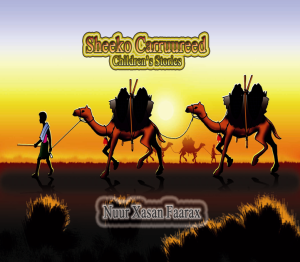By: Sirad Shirdon
1. Becoming culturally responsive educators
Somali parents are attempting to educate their children with a backdrop of discrimination targeted towards Muslims, English language learners, Black students and immigrants and refugees (Bigelow, 2010). As Vygotsky stressed it is important that we connect children’s social worlds to the classroom, as this will be a means of enhancing children’s learning. A starting point for this would be to develop a strong relationship with Somali children’s parents. As Moll et al.(1992) encouraged us to do, as educators we should position ourselves as learners and seek to learn from students and their families about their home cultures. A starting point is for the responsive educator to critically self-analyze for any potential biases. Following that, educators can seek to critically learn about our families and their cultures via our students’ families and communities. Not Fox News. Not MSNBC. But our families. Learn about Somalia, Islam and other key components of Somali culture. Learn about the community and their various centers. Have some tea and do some shopping at the local Somali mall. This will give you the tools to bring those funds of knowledge into the classroom. By connecting students’ social worlds, you will be able to provide more meaningful language and literacy instruction.
2. Promoting Somali parent’s involvement in children’s schooling
Somali parents are incredible advocates for their children, but often do not know how to effectively participate in their child’s schooling. Some Somali parents are intimidated to engage with their children’s schooling due to differing cultural norms about teaching, which position educators as the exclusive teachers of children. Consequently, some Somali parents believe it is overstepping to be proactive in communicating with a child’s teacher. The responsive teacher can position him/herself as a student of Somali culture, asking parents how teaching and learning takes place in the Somali context. Based on this knowledge, the teacher can teach families about education in the American context. With this knowledge, parents will feel empowered to be proactive in their child’s learning.
3. Promoting cultural responsiveness through dual language books
Research has shown that utilizing dual language books in the classroom can improve the motivation, interest and family involvement of culturally diverse children in the classroom (Naqvi, Thorne, Pfitscher, Nordstokke & McKeogh, 2013). Dual language books validate student’s cultural identities, and are ways of validating and sustaining the cultural knowledge, and experiences of your students and their families. These books also demonstrate the importance and utility in using orality as a bridge to promote children’s literacy, given that many Somali-English books are based on popular Somali folktales. The Minnesota Humanities Center has developed a series of Somali-English books for children which can be accessed here.
When advising Somali parents about best ways to support children’s literacy at home, I build from families existing strengths, which includes orality. Research has shown that the development of a strong first language will facilitate the child’s learning of the second language (Genesee, Geva, Dressler, & Kamil, 2008). Using the Somali culture as a framework, I encourage mothers to increase children’s language exposure by singing Somali lullabies to their children, and sharing stories. One cultural activity that connects very well to dialogic reading, is the oral storytelling activity of sheeko sheeko. In sheeko sheeko, the mother starts the exchange with her child by saying “sheeko, sheeko”. The child responds: sheeko xariir (what’s the story?). The mother and child go back and forth and build a story, made up of Somali rhymes. These cultural activities provide me with a foundation to explain the importance of other dialogic activities, most notably reading. For mothers who cannot read in English, I encourage them to create stories from the pictures and point to letters and words, to increase the child’s print awareness. With a strong first language, the child will be able to more easily transfer those skills to learning to speak and read in English.
References:
Bigelow, M. (2010). Mogadishu on the Mississippi: language, racialized identity, and education in a new land. Malden, MA: Wiley-Blackwell
Genesee, F., Geva, E., Dressler, C., & Kamil, M. L. ( 2008). Cross-linguistic relationships in second-language learners. In D. August & T. Shanahan (Eds.), Developing reading and writing in second-language learners : lessons from the report of the National Literacy Panel on Language-Minority Children and Youth (61-93). New York: Routledge.
Moll, L., Amanti, C., Neff, D. & Gonzalez, N. (1992). Funds of knowledge for teaching.Theoryinto Practice, 31(2), pp.132-141
Naqvi, R., Thorne, K., Pfitscher, C., Nordstokke, D. & McKeogh, A. (2013). Reading dual language books: improving early literacy skills in linguistically diverse classrooms. Journal of Early Childhood Research, 11(1), pp. 3-15
Vygotsky, L. (1978). Mind in Society: the development of higher psychological processes. Cambridge, MA: Harvard University Press



